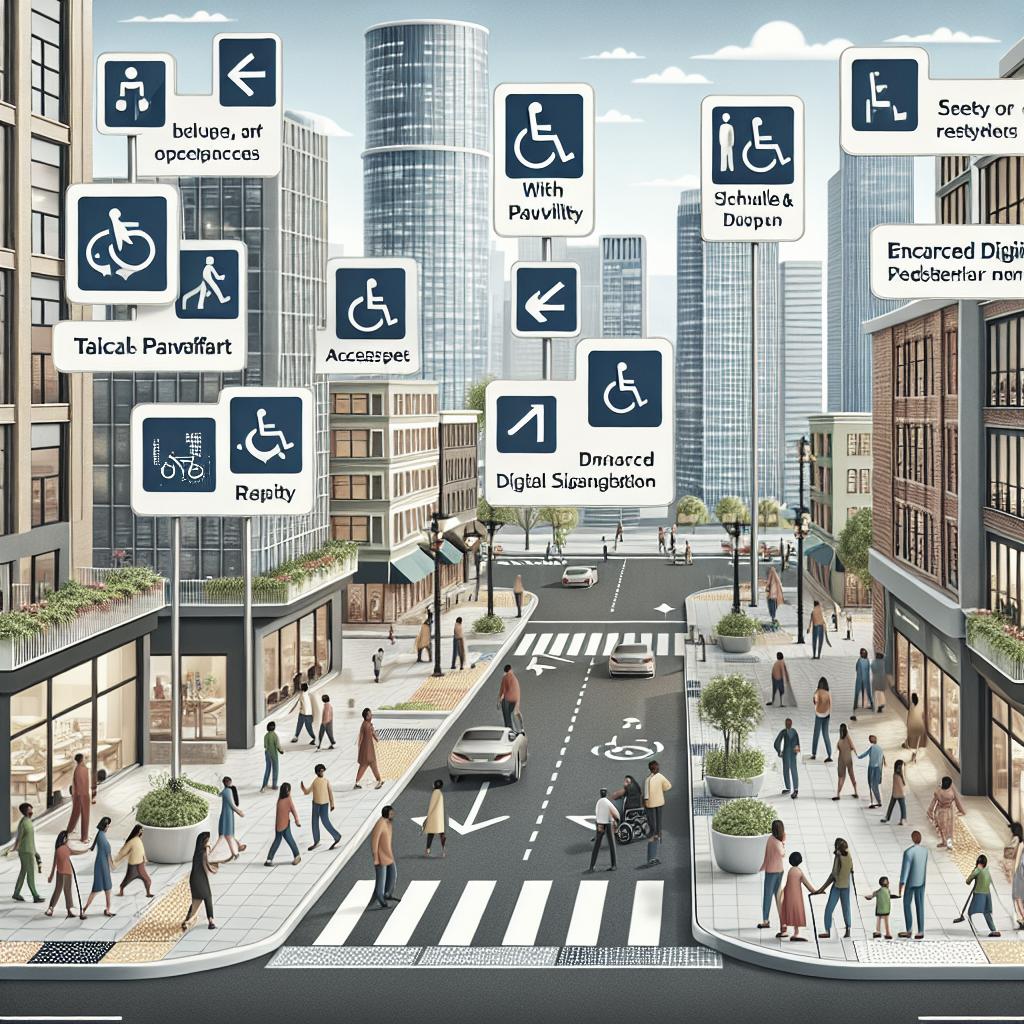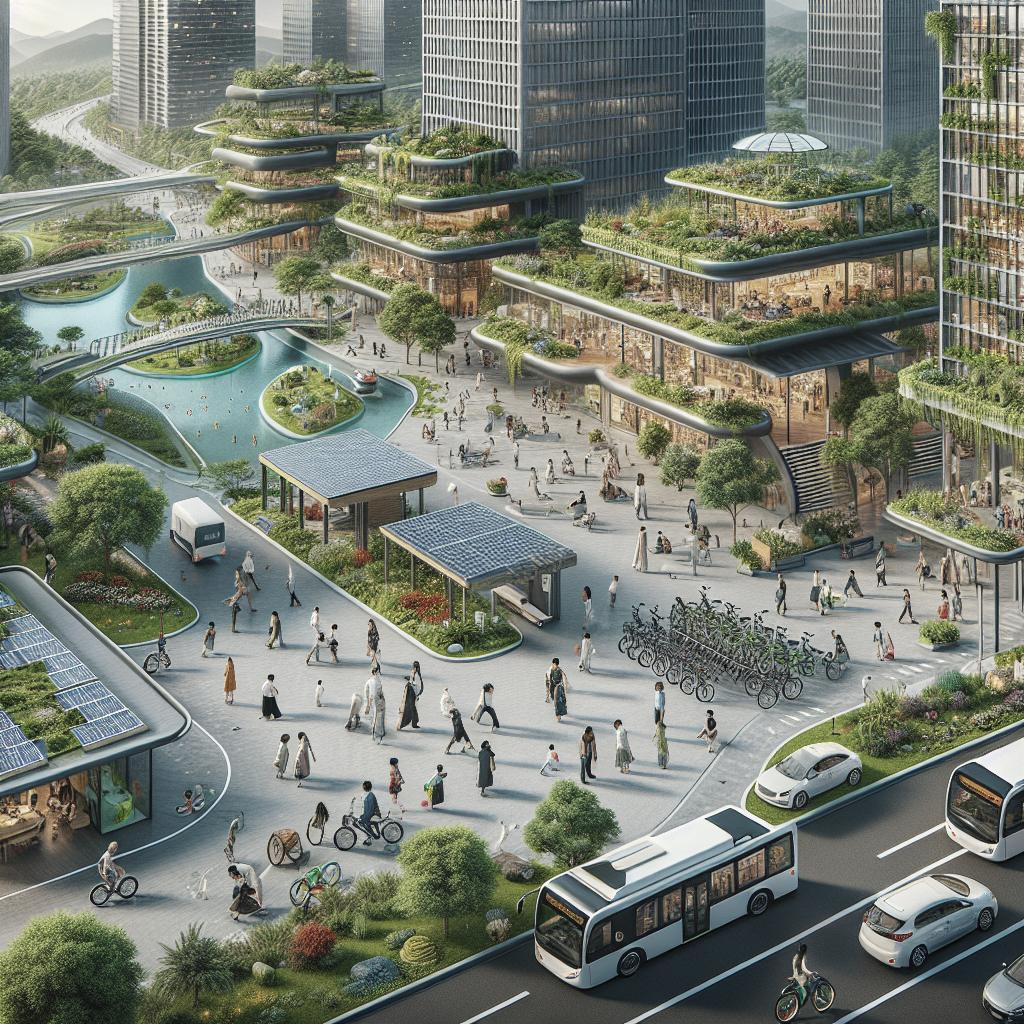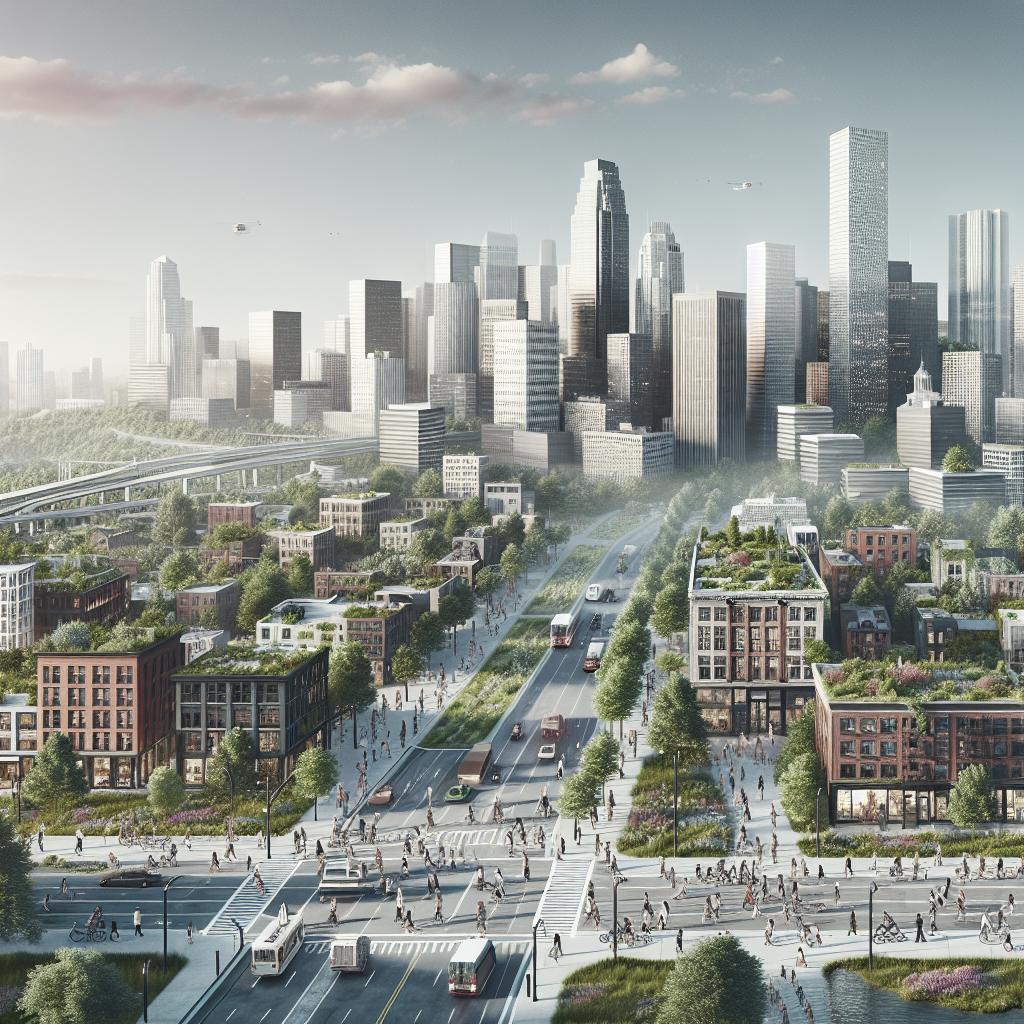<>
Inclusive Urban Design: Principles and Practices for Modern Cities
Urban design is a pivotal aspect of evolving cities, marrying functionality with aesthetics while considering the diverse needs of its inhabitants. Inclusive urban design strives to create environments that are accessible, safe, and welcoming to all people, regardless of age, ability, or socio-economic status. This comprehensive guide delves into the essential principles of inclusive urban design, exploring topics ranging from accessibility to community participation, and highlighting how cities can become more equitable spaces for all residents.
Abstract
Inclusive urban design revolves around creating environments that cater to the diverse needs of all citizens, ensuring that public spaces and infrastructure are accessible and welcoming regardless of age, gender, disability, or socio-economic status. The principles discussed in this article include accessibility, safety, engagement, flexibility, sustainability, and aesthetic alignment. By integrating these principles, planners and designers can craft urban spaces that foster community interaction, support economic vitality, and enhance quality of life for all.
Access this chapter
Understanding the principles of inclusive urban design is crucial for urban planners, architects, and policymakers looking to create more equitable cities. This chapter provides an in-depth examination of the core tenets of inclusive design, offering practical solutions and best practices for integrating these principles into urban landscapes. Readers will gain insights into the benefits of inclusive design and the ways it can transform urban environments. Through case studies and real-world examples, the chapter demonstrates how inclusive urban design can address disparities and promote social equity. Whether you are a professional in the field or an engaged citizen, this exploration will equip you with the knowledge to advocate for and implement inclusive design practices in your community.
Subscribe and save
Stay informed and up-to-date with the latest trends in urban design by subscribing to our blog. As a subscriber, you’ll receive access to exclusive content, expert insights, and practical guides aimed at helping you navigate the complexities of urban planning. Additionally, subscribers can save on premium resources and get early access to webinars, workshops, and networking events. Becoming a subscriber grants you a wealth of information designed to enhance your understanding of inclusive urban design and its significant impact on community development. Join our growing community of professionals committed to fostering inclusive, dynamic, and sustainable urban environments.
Buy Now
Invest in our detailed ebooks and reports on inclusive urban design to deepen your knowledge and stay ahead of the curve. Our expertly crafted materials provide actionable insights and comprehensive strategies that can be implemented in projects ranging from small community initiatives to large-scale urban developments. These resources offer step-by-step guidance and real-world examples to help you make a meaningful impact in your city. Click “Buy Now” to access our full library of resources and start implementing the principles of inclusive urban design today. Empower yourself with the tools and knowledge to create spaces that benefit everyone.
Similar content being viewed by others
As you explore the principles of inclusive urban design, you might also be interested in related content that expands on these ideas. Popular resources include articles on “Sustainable Urban Planning,” “Smart Cities: Integrating Technology with Urban Life,” and “Community Engagement in Urban Development.” These articles delve into complementary aspects of urban design and provide a richer understanding of creating inclusive and future-ready cities. Check out our recommended reads and stay informed about the latest developments in urban design. By immersing yourself in these topics, you can contribute to creating more equitable and innovative urban spaces.
References
1. Gehl, J. (2010). Cities for People. Island Press. 2. Carmona, M. (2019). Principles of Urban Design. Taylor & Francis. 3. Smith, N. (2020). Inclusive Urban Planning. Routledge. 4. Buchanan, P. (2019). The Role of Public Spaces in Urban Development. Urban Studies Journal. 5. Jacobs, J. (1961). The Death and Life of Great American Cities. Random House. 6. Talen, E. (2018). Design for Diversity. Routledge.
Author information
Authors and Affiliations
Lucas Martin is a graduate in Journalism and Communications with a passion for travel, technology, and innovative urban design. With a strong background in local media and online content creation, Lucas aims to contribute to discussions around creating inclusive urban environments. He is keen on leveraging his research and writing skills to advocate for more equitable and sustainable urban development practices.
Editor information
Editors and Affiliations
This blog post has been reviewed and edited by a team of urban design professionals and communications experts. Our editorial team, affiliated with leading institutions in urban planning and sustainable development, ensures that the content is accurate, relevant, and engaging for our readers.
Rights and permissions
This content is published under a Creative Commons License. Permissions beyond the scope of this license may be available by contacting the publisher. For more details on rights and permissions, please visit our website.
Copyright information
© 2023 by Lucas Martin. All rights reserved. No part of this publication may be reproduced or transmitted in any form or by any means without the prior written permission of the author.
About this paper
Cite this paper
Martin, L. (2023). “What are the principles of inclusive urban design.” Urban Design Blog. Retrieved from [insert URL].
Download citation
You can download the citation for this paper in various formats such as APA, MLA, and Chicago. Visit our citation manager tool for easy access and download.
Share this paper
If you found this paper insightful, share it with your network using the sharing options available on our website. Engaging more people in the conversation about inclusive urban design helps drive meaningful change.
Publish with us
Are you an expert in urban design or related fields? We invite you to publish your work with us. By contributing to our platform, you can reach a global audience of professionals and enthusiasts passionate about urban development. Submit your manuscripts, proposals, or articles through our submission portal to get started.
| Section | Summary |
|---|---|
| Abstract | Overview of the principles of inclusive urban design, emphasizing accessibility, safety, engagement, flexibility, sustainability, and aesthetics. |
| Access this chapter | Detailed examination of inclusive design principles, including practical solutions and case studies. |
| Subscribe and save | Information on subscribing to the blog for exclusive content and savings on premium resources. |
| Buy Now | Promotion of detailed ebooks and reports on inclusive urban design. |
| Similar content being viewed by others | Suggestions for related articles and resources. |
| References | List of sources and further reading on inclusive urban design. |
| Author information | Biographical information about the author, Lucas Martin. |
| Editor information | Details about the editorial team and their affiliations. |
| Rights and permissions | Information about the Creative Commons License and contact details for additional permissions. |
| Copyright information | Copyright notice and usage rights for the publication. |
| About this paper | Section for citing, downloading, and sharing the paper. |
| Publish with us | Invitation to experts to publish their work and reach a global audience. |


